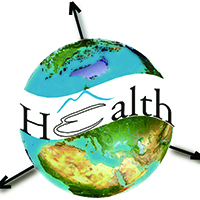Modelling and analyzing spatial clusters of leptospirosis based on satellite-generated measurements of environmental factors in Thailand during 2013-2015

All claims expressed in this article are solely those of the authors and do not necessarily represent those of their affiliated organizations, or those of the publisher, the editors and the reviewers. Any product that may be evaluated in this article or claim that may be made by its manufacturer is not guaranteed or endorsed by the publisher.
Accepted: 22 August 2020
Authors
This study statistically identified the association of remotely sensed environmental factors, such as Land Surface Temperature (LST), Night Time Light (NTL), rainfall, the Normalised Difference Vegetation Index (NDVI) and elevation with the incidence of leptospirosis in Thailand based on the nationwide 7,495 confirmed cases reported during 2013-2015. This work also established prediction models based on empirical findings. Panel regression models with random-effect and fixed-effect specifications were used to investigate the association between the remotely sensed environmental factors and the leptospirosis incidence. The Local Indicators of Spatial Association (LISA) statistics were also applied to detect the spatial patterns of leptospirosis and similar results were found (the R2 values of the random-effect and fixed-effect models were 0.3686 and 0.3684, respectively). The outcome thus indicates that remotely sensed environmental factors possess statistically significant contribution in predicting this disease. The highest association in 3 years was observed in LST (random- effect coefficient = -9.787, P<0.001; fixed-effect coefficient = -10.340, P=0.005) followed by rainfall (random-effect coefficient = 1.353, P<0.001; fixed-effect coefficient = 1.347, P<0.001) and NTL density (random-effect coefficient = -0.569, P=0.004; fixed-effect coefficient = -0.564, P=0.001). All results obtained from the bivariate LISA statistics indicated the localised associations between remotely sensed environmental factors and the incidence of leptospirosis. Particularly, LISA's results showed that the border provinces in the northeast, the northern and the southern regions displayed clusters of high leptospirosis incidence. All obtained outcomes thus show that remotely sensed environmental factors can be applied to panel regression models for incidence prediction, and these indicators can also identify the spatial concentration of leptospirosis in Thailand.
How to Cite

This work is licensed under a Creative Commons Attribution-NonCommercial 4.0 International License.








